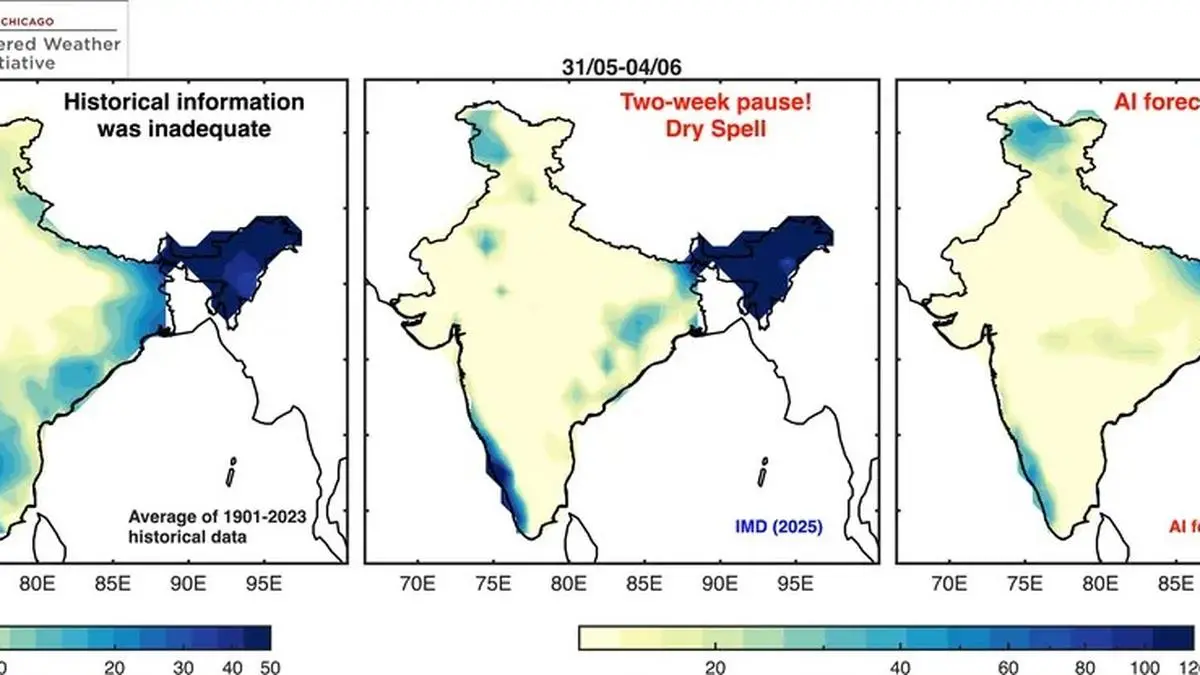By Srikrishnan Pc
Copyright thehindubusinessline

This summer, 38 million farmers across India accessed AI-driven monsoon forecasts, enabling them to choose whether to plant, change crops, or delay. This was made possible by NeuralGCM, a Google Research model enhanced by the University of Chicago, combining physics with machine learning to deliver precise monsoon predictions.
For years, weather and climate models have been expensive and complex, often demanding a supercomputer to run. Teams at Google Research set out to explore whether these models could be developed more efficiently with greater accuracy, which led to the development of NeuralGCM.
Data learning
Unlike traditional models that depend solely on physics, this AI-based model is trained on historical weather data to infer patterns and learn from past events, while using physics. Importantly, it is built to be adaptable and efficient, capable of running on a single laptop, making forecasting more accessible to the scientific community.
When the NeuralGCM was open-sourced, University of Chicago’s Human-Centered Weather Forecasts Initiative recognized that one of the most critical yet difficult decisions for Indian farmers is when to sow their seeds. Through rigorous testing of several AI weather models, the University of Chicago team found that NeuralGCM, when blended with other advanced models like the European Centre for Medium-Range Weather Forecasts (ECMWF)’s Artificial Intelligence/Integrated Forecasting System (AIFS) and historical data, proved to be the most effective tool. It accurately predicted the onset of the Indian monsoon up to a month ahead, even identifying an unusual dry spell during its progression.
Real-world impact
In partnership with the Union Ministry of Agriculture and Farmers’ Welfare, the University of Chicago used this integration of AI models to deliver tailored and advanced forecasts by SMS to 38 million farmers this summer. This enabled farmers to adjust their planting choices — deciding when to sow, whether to purchase additional seeds, shift to alternative crops or wait — helping them adapt to an unusually delayed monsoon season.
Research from the University of Chicago shows that providing accurate forecasts a month in advance allows farmers to align their choices with upcoming weather and improve their results. The study found that early forecasts nearly doubled farmers’ annual incomes. This work reflects a broader “democratisation of weather forecasting,” said Pedram Hassanzadeh, a University of Chicago researcher specialising in machine learning and extreme weather.
The university’s team collaborated with the Indian government to collect and sent out monsoon predictions.
According to the Indian government, the monsoon began early this year but stalled midseason for 20 days. The AI forecasts accurately anticipated this rainfall pause, officials noted.
“Before this, I mostly depended on my own experience and local knowledge to judge when the monsoon would arrive,” said Parasnath Tiwari, a farmer from Madhya Pradesh who received forecasts on his phone. He views were part of a release issued by the Univeristy and Google.
Smallholder farmers are among the poorest populations globally, noted Michael Kremer, a University of Chicago economics professor who studies agriculture in developing countries.
“Climate change is seriously threatening their livelihoods in many cases,” he said.
This project stands as a strong example of how foundational AI research can translate into real-world applications, helping communities worldwide strengthen climate resilience.
Published on September 18, 2025



